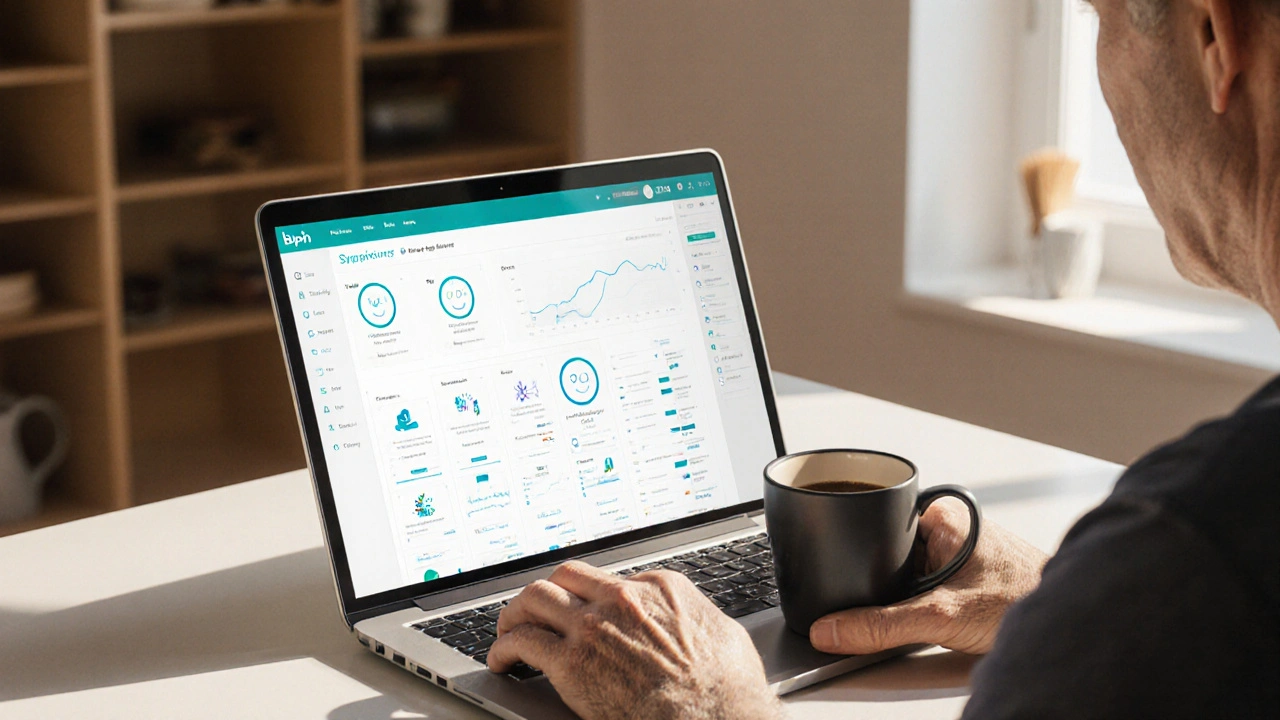Benign Prostatic Hyperplasia: What You Need to Know
When dealing with benign prostatic hyperplasia, a non‑cancerous enlargement of the prostate that typically appears after age 50. Also known as BPH, it creates urinary problems by pressing on the urethra and changing bladder dynamics, many men wonder why everyday bathroom trips become a hassle. In simple terms, benign prostatic hyperplasia is the main cause of a group of issues called lower urinary tract symptoms, issues like frequent urination, urgency, weak stream, and nighttime trips. Understanding that BPH encompasses prostate enlargement helps you see why treatment often targets both the gland and the urinary passage.
How BPH Affects Everyday Life
The bladder and prostate work together to store and release urine. When the prostate grows, it squeezes the urethra, and the bladder has to contract harder. This leads to urinary retention, the feeling that you can’t fully empty the bladder and the dreaded “just‑got‑up‑to‑go” trips at night. Many men report disrupted sleep, reduced concentration, and even embarrassment in social situations. Recognizing these patterns early can prevent complications like bladder stones or infections. The link between BPH and alpha blockers, medications that relax smooth muscle in the prostate and bladder neck shows why doctors often start with symptom relief before considering surgery.
Medication choices reflect the underlying cause. 5-alpha-reductase inhibitors, drugs that shrink the prostate by blocking the hormone DHT target the gland itself, while alpha blockers, relax the muscle fibers around the urethra improve urine flow quickly. This dual‑approach means a patient can experience fast relief from an alpha blocker and long‑term shrinkage from a 5‑alpha‑reductase inhibitor. The relationship, "alpha blockers relieve symptoms, 5‑alpha‑reductase inhibitors treat the cause," is a core concept for anyone navigating BPH therapy.
Beyond pills, lifestyle tweaks play a big role. Cutting back on caffeine and alcohol reduces bladder irritation, while regular pelvic floor exercises strengthen the muscles that help control urination. Staying active keeps weight in check, and excess fat can worsen prostate growth. Drinking enough water early in the day but limiting fluid intake in the evening can reduce nighttime trips, a simple habit that many men overlook.
When medication isn’t enough, minimally invasive procedures offer alternatives. Techniques like transurethral microwave therapy (TUMT) or laser therapy use heat or light to ablate excess prostate tissue without a full surgical cut. These options require a prostate that’s not too large and are often chosen when side effects of drugs become problematic. Understanding that BPH requires a tailored approach—whether drugs, lifestyle, or procedures—helps patients have realistic expectations.
Monitoring is essential. PSA (prostate‑specific antigen) tests and regular digital rectal exams can distinguish BPH from more serious conditions like prostate cancer. While BPH itself isn’t cancerous, the two can coexist, so routine check‑ups are a smart move. Knowing the difference between "prostate enlargement" and "prostate cancer" can ease anxiety and guide appropriate care.
In practice, men often ask which symptom signals a need for doctor’s attention. Sudden inability to urinate, blood in the urine, or severe pain are red flags that deserve immediate evaluation. Otherwise, a gradual increase in frequency, a weak stream, or frequent nighttime trips can be managed with the strategies above and a conversation with a healthcare provider.
All these pieces—symptom patterns, medication choices, lifestyle changes, and procedural options—form a comprehensive picture of how to live with benign prostatic hyperplasia. Below you’ll find articles that dive deeper into each area, from stress‑reducing tips for heart health that also benefit urinary function, to safe ways to buy generic medications online, to detailed drug comparisons that help you choose the right BPH treatment. Use this collection to build a personal action plan that keeps bathroom visits predictable and your quality of life high.
- September 30, 2025
- Comments 10
- Health and Wellness

